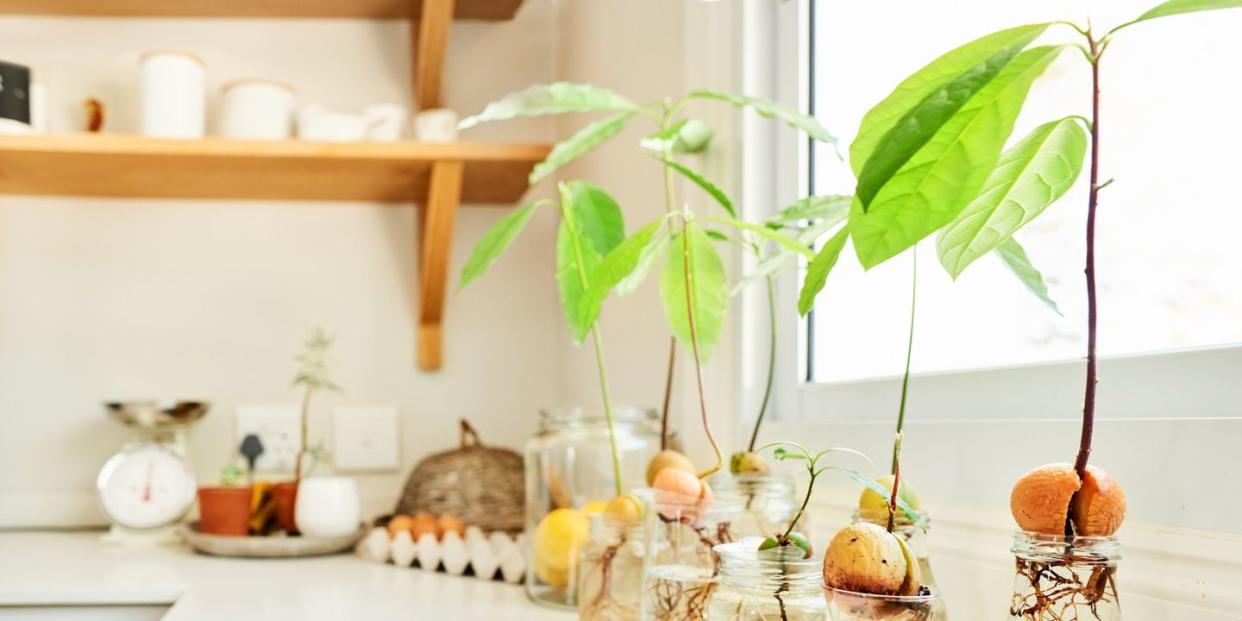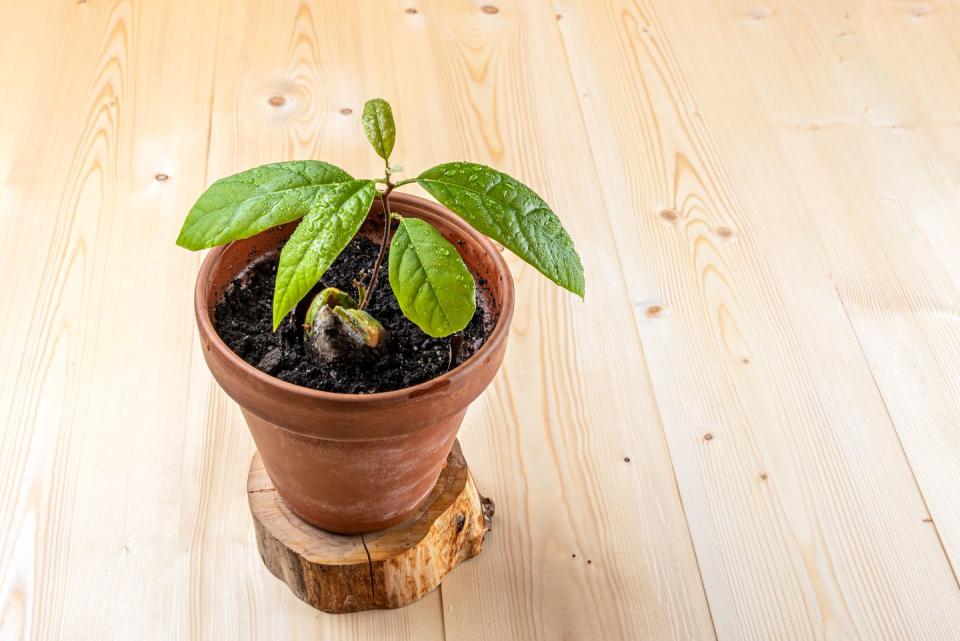It's So Easy to Grow an Avocado Plant

Fresh avocado may be tasty on toast or in your famous guacamole, but don’t toss away that seed! Use it to grow a fun (and free!) houseplant to add to your collection of pothos, bromeliads, orchids, and African violets. “It’s actually easy to grow an avocado plant from the pit, which something you really can’t do with any other plant,” says Tim Spann, PhD, plant physiologist and consultant to the California Avocado Commission. “These plants have been popular for decades because they require almost no care.” It's also a fun family project!
Although there are several kinds of avocados commercially available in the U.S., most are Haas, which is the most popular type because of its high oil content and creamy texture. Their peak season is May through August, though you’ll find them most of the year. You also can get other varieties year-round, but it actually doesn’t matter what variety you use to grow your avocado plant.
Here’s what else you need to know about how to grow an avocado plant from the seed.
“Plant” your pit right away.
Don't let the pit dry out. As soon as you finish eating your avocado, stick three toothpicks into the sides of the pit so it can balance on a small juice glass or jar filled partly with water. Make sure the picks are placed so that the bottom 1/3 of the pit (the broader end) is submersed. “In the tropical forest, the avocado falls to the ground and gets eaten, and the pit remains nestled in the leaf litter on the forest floor,” says Spann. “You’re trying to emulate this environment by keeping the pit partially above the growing medium, which is the water, in this case.”
Give it bright light.
Place your glass and seed where it will receive plenty of bright light, such as on an east or west window sill. Change the water every couple of days so it doesn’t get slimy. Within about 2 weeks, the seed should start splitting. Those two halves are full of carbohydrates and nutrients the plant needs to develop. Soon, roots should emerge from the bottom. If nothing is happening after about 3 weeks, toss it and try again with a new pit.
Transplant your avocado.
If you’re having good luck with your plant, the roots will fill the glass in about two months. That’s a sign it’s time to put your seed into a pot. Fill a 6- to 8-inch diameter pot with general potting soil. Also, make sure the pot has drainage holes because avocados don’t like to stay too wet. And don’t opt for a bigger pot because the plant won’t be able to use all the moisture quickly enough from a large pot.

Set the sprouted seed in the soil the same way it was in the glass, with about 1/3 of the pit in the soil and the remaining portion above ground. Most potting soil has some fertilizer the plant can use for a few months, then you can start feeding your plant monthly or bimonthly, using any liquid houseplant fertilizer. Follow the package instructions.
How do you care for an avocado plant?
Avocados are like most tropical houseplants which prefer bright indirect light, so keep it in the brightest spot in your home. Watering is the biggest challenge. “Avocados are extremely sensitive to wet feet, so let the pot dry out between waterings,” says Spann. Stick your finger in the soil to check moisture levels; don’t water if it still feels damp and check again in a few days. Chances are, you’ll only need to give it a drink every few weeks in the summer and slightly more often in the winter when it’s drier indoors.
Will you get fruit from an avocado plant?
Sadly, probably not. For starters, it takes 7 to 10 years until they’re ready to produce fruit—and the chances you’ll be able to keep it alive that long are pretty slim, says Spann. But you can try! And you can always grow another avocado plant from the next seed you save.
You Might Also Like

